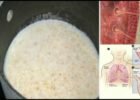Many people consider the washing machine a self-cleaning appliance. However, this is not true and the washing machine, as any other appliance, needs proper maintenance. Mold problems are the most common, even with a new machine. It is very likely that you will notice stains and funky smell on your clothes only after using the machine for a few months.
WHY YOU SHOULD CLEAN YOUR WASHING MACHINE
Molds and fungi can cause inflammation in the respiratory tract, allergic reactions, and other health issues. The most common signs of mold contamination include:
- Runny nose
- Itchy eyes
- Coughing
- Red eyes
- Wheezing
- Rash
- Watery eyes
Exposure to mold has been associated with a development of asthma in children as well as lung infections.
It is worth mentioning that front loading washing machines are more susceptible to mold and there are numerous complaints about mold contamination manufactured by Kenmore, Bosch, LG ad Whirlpool until the late 2000s.
HOW TO CLEAN YOUR WASHING MACHINE
Most websites recommend using potassium hydrogen oxalate and bleach, but this will not do the trick.
This substance is toxic and it has been found to cause irritation of the throat and nose. Moreover, ingestion causes burning pain in the stomach, esophagus, and throat as well as skin and eye irritation. In case you come in contact with this substance, seek medical attention and get fresh air right away.
Bleach is also irritating and corrosive to the eyes, lungs, and skin. It may cause poisoning and even death if ingested.
To stay on the safe side, you can use vinegar or baking soda, both of which are non-toxic but extremely effective at killing mold.
Here`s what you will need:
– Gloves
– A sponge
– White vinegar
– Baking soda
– Tea tree essential oil
Directions:
- Sprinkle a tablespoon of baking soda onto the affected area
- Take a spray bottle and fill it with diluted vinegar ( 2:1 ratio)
- Add a few drops of tea tree oil, citrus fruit oil, or lavender oil, if you can`t stand the strong vinegar`s smell
- Spray onto the affected area and let it work for a few hours
- Scrub the mold with a brush
- Leave the door of you machine open in order to let it dry
- Run the machine on rinse cycle
- Repeat the procedure every month
Note: Avoid breathing baking soda as it is acidic. The same applies for vinegar, so make sure it doesn’t come in contact with sensitive skin.




